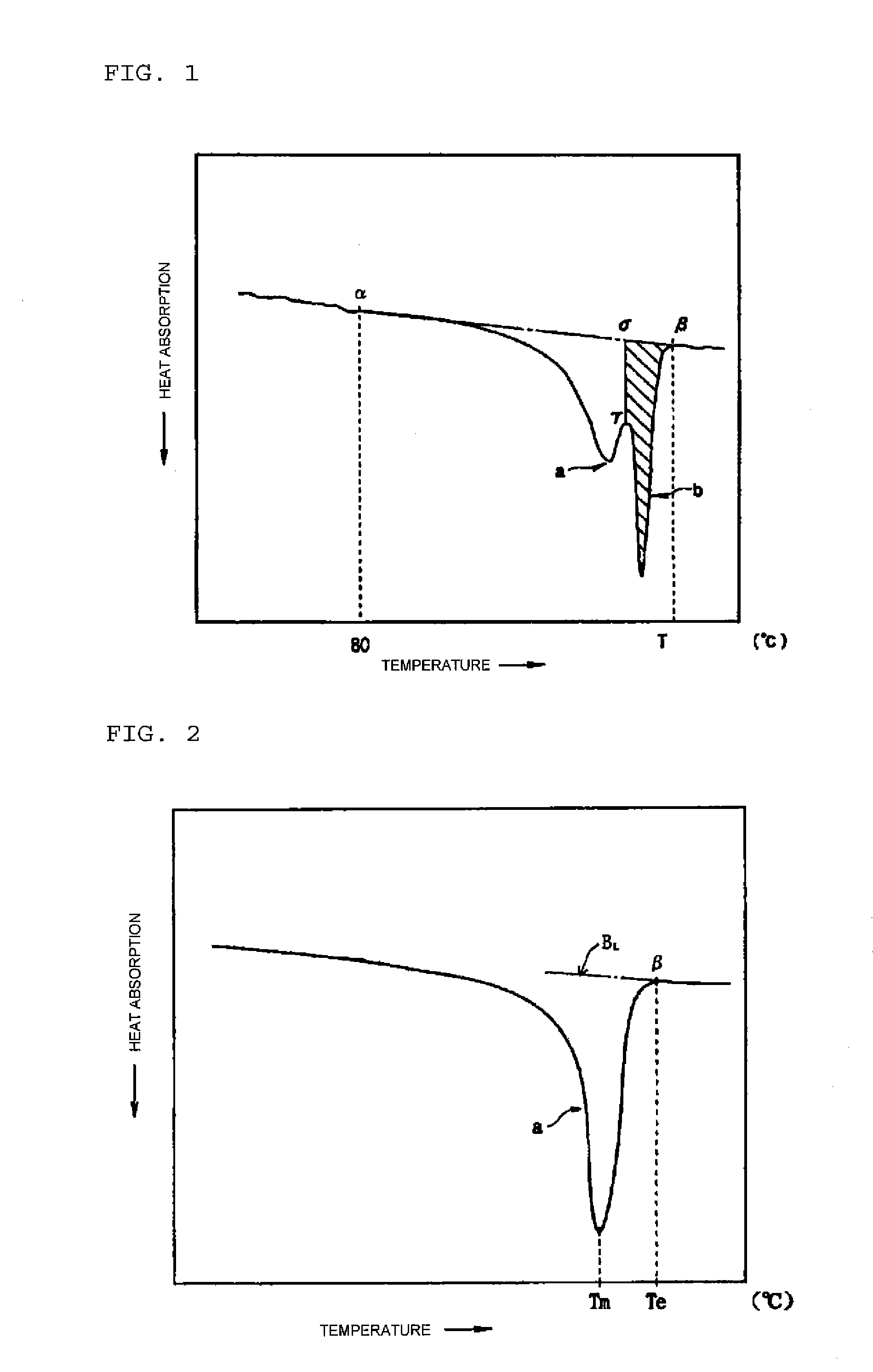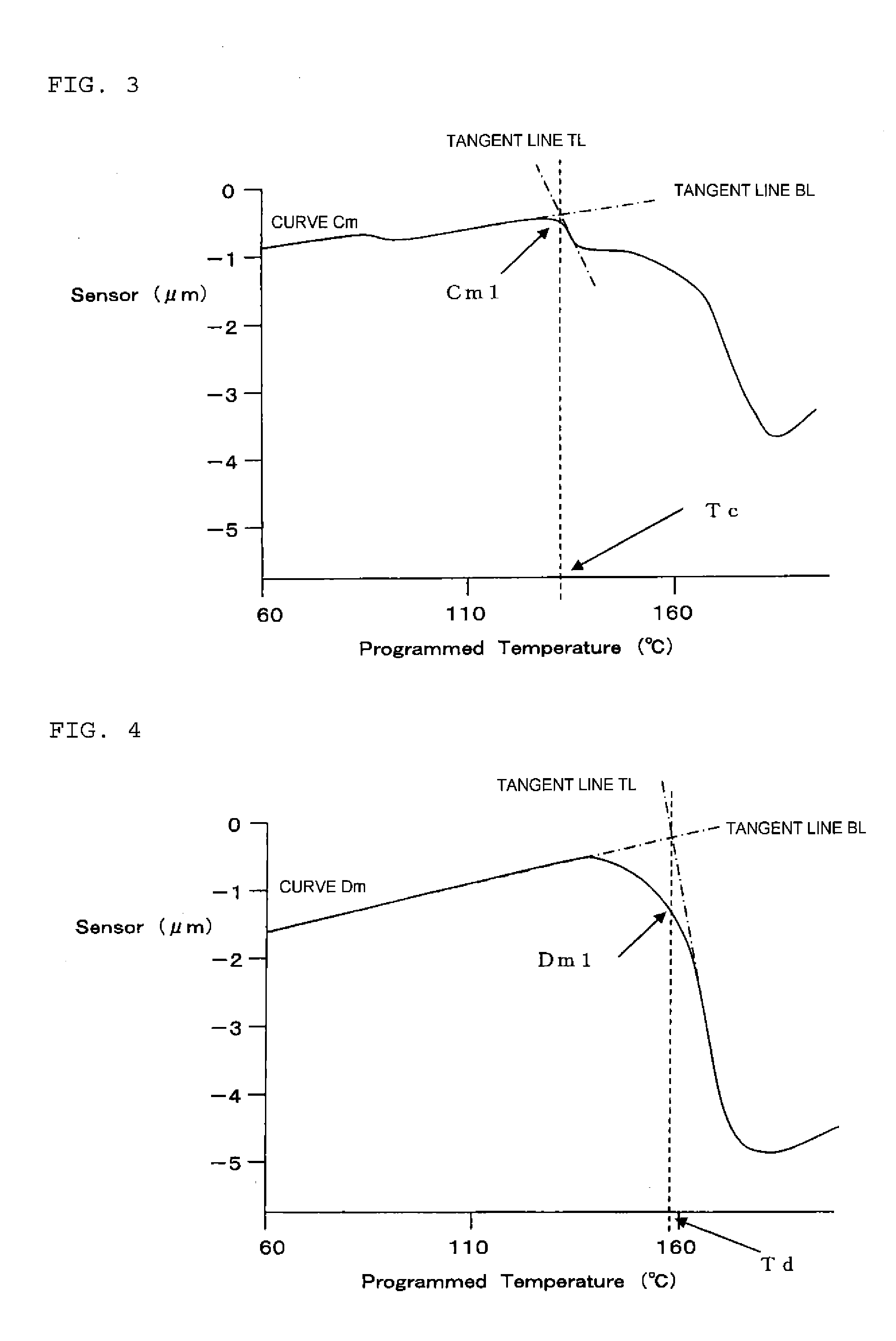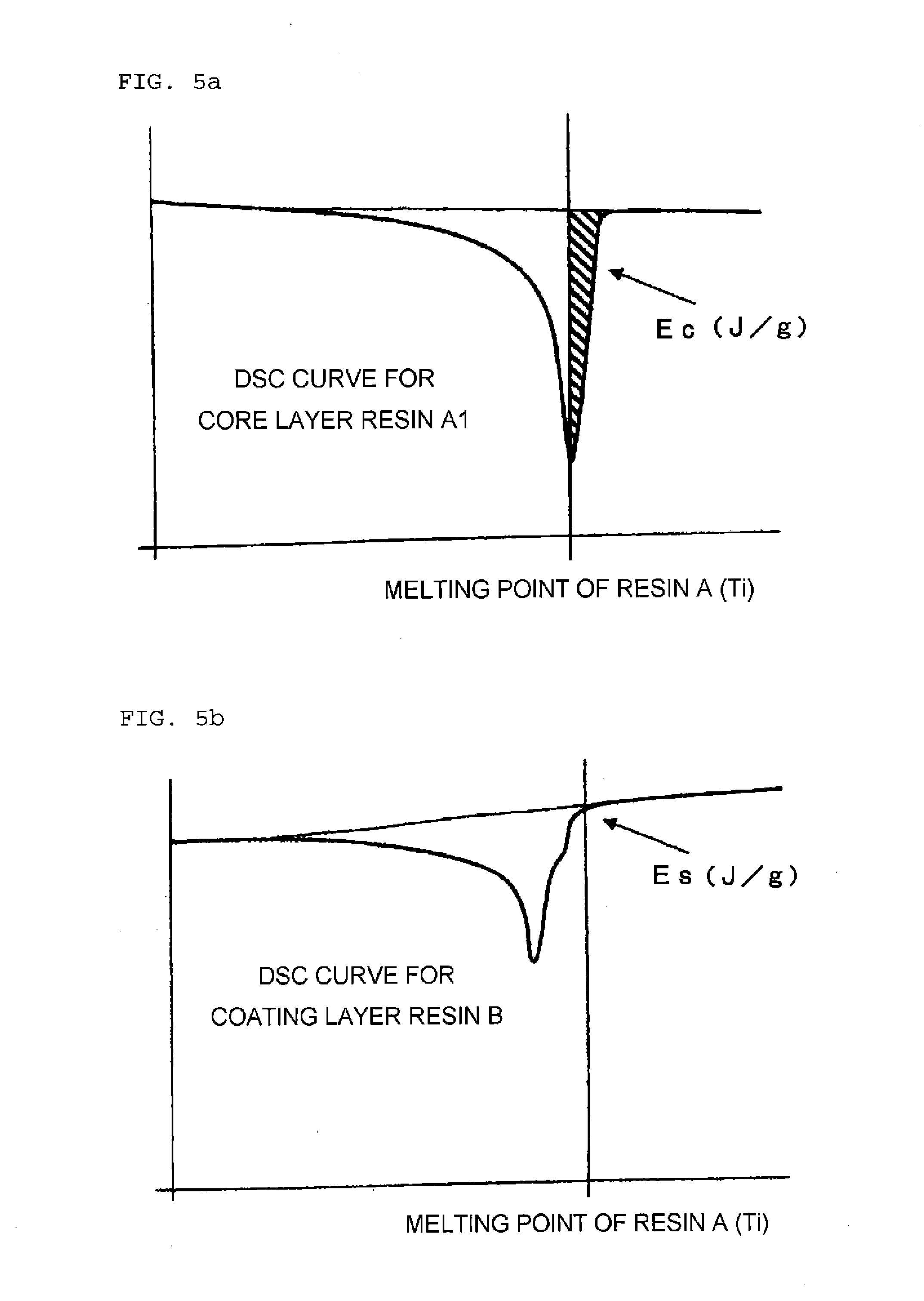Expanded polypropylene resin beads and expanded bead molding
a polypropylene resin and expanded bead technology, which is applied in the field of expanded bead molding and expanded bead molding, can solve the problems of high steam pressure required for in-mold molding, exceed the pressure resistance performance of conventional molding machines, and it is difficult to apply sufficient steam pressure, etc., to achieve sufficient fuse bonding, high melting point, and sufficient rigidity
- Summary
- Abstract
- Description
- Claims
- Application Information
AI Technical Summary
Benefits of technology
Problems solved by technology
Method used
Image
Examples
examples
[0164]Hereinafter, the present invention will be described in detail by way of Examples and Comparative Examples.
[0165]The type of the polypropylene resin used in Examples, Comparative Examples and Reference Examples, the heat quantity of melting (J / g) of the resin as measured by a differential scanning calorimetric analysis, the tensile modulus (MPa) and the like are presented in Table 1.
[0166]
TABLE 1Total heatMeltingquantityTensilepointof meltingmodulus° C.J / gMPaRemarksCoreResin A1154.3971350Ethylene-propylene random copolymerlayerResin A2153.8861350Ethylene-propylene random copolymerresinResin A3165.61201560Propylene homopolymerResin A4153.5931090Simple blend of resin A1 and resin B(weight ratio 80:20)Resin A5153.7951160Simple blend of resin A1 and resin B(weight ratio 90:10)Resin A6154.1931220Simple blend of resin A1 and resin B(weight ratio 95:5)Resin A7152.0901110Simple blend of resin A1 and resin J(weight ratio 80:20)Resin A8153.3951200Simple blend of resin A1 and resin J(wei...
examples 1 to 18
[0167]100 parts by weight of the polypropylene resins (Resin A1 to Resin A10) indicated in Table 1 (core layer resin (y) in Table 2, Table 3 and Table 4) and 0.10 parts by weight of a zinc borate powder (cell controlling agent) were supplied to an extruder, and the mixture was heated, melted and kneaded. Thus, a first molten resin for core layer formation was formed. At the same time, the polypropylene resins (Resin B to Resin G) indicated in Table 1 (coating layer resin (x) in Table 2, Table 3 and Table 4) were supplied to another extruder, and the resin was heated, melted and kneaded. Thus, a second molten resin for coating layer formation was formed.
[0168]Subsequently, the first molten resin for core layer formation and the second molten resin for coating layer formation were supplied to a co-extrusion die, and inside the die, the second molten resin was laminated on the first molten resin such that the second molten resin surrounded the strand of the first molten resin. Furtherm...
PUM
| Property | Measurement | Unit |
|---|---|---|
| thickness | aaaaa | aaaaa |
| tensile yield strength | aaaaa | aaaaa |
| melting point | aaaaa | aaaaa |
Abstract
Description
Claims
Application Information
 Login to View More
Login to View More - R&D
- Intellectual Property
- Life Sciences
- Materials
- Tech Scout
- Unparalleled Data Quality
- Higher Quality Content
- 60% Fewer Hallucinations
Browse by: Latest US Patents, China's latest patents, Technical Efficacy Thesaurus, Application Domain, Technology Topic, Popular Technical Reports.
© 2025 PatSnap. All rights reserved.Legal|Privacy policy|Modern Slavery Act Transparency Statement|Sitemap|About US| Contact US: help@patsnap.com



